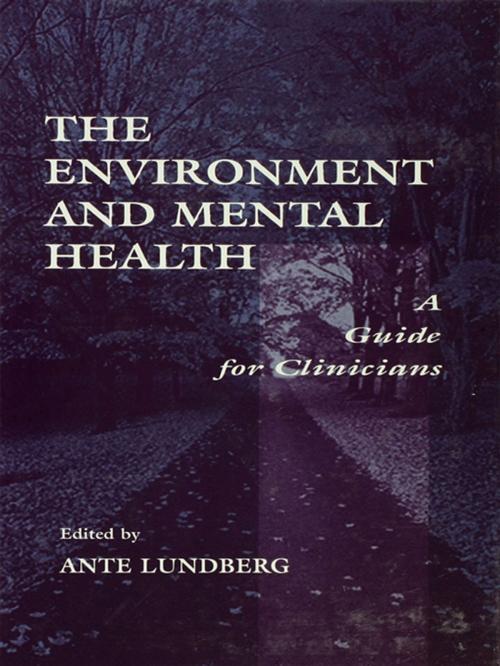The Environment and Mental Health
A Guide for Clinicians
Nonfiction, Health & Well Being, Psychology, Clinical Psychology, Mental Health| Author: | ISBN: | 9781134809134 | |
| Publisher: | Taylor and Francis | Publication: | May 13, 2013 |
| Imprint: | Routledge | Language: | English |
| Author: | |
| ISBN: | 9781134809134 |
| Publisher: | Taylor and Francis |
| Publication: | May 13, 2013 |
| Imprint: | Routledge |
| Language: | English |
Environmental illness is a concept of growing concern to all health professionals. Patients with problems presumably caused by sick buildings, electromagnetic fields and hypersensitivity to chemicals--to name a few--are often referred to psychologists, psychiatrists, and other counselors. The battery worker with fatigue, headaches, abdominal pain and an elevated lead level...the assembly worker with pain and numbness in her hand and delayed median nerve conduction...the patient who develops typical contact dermatitis after working with epoxies..., these are straightforward cases. But they are in the minority. In many cases, needy, demanding, and difficult patients present complex and challenging psychological issues. Practitioners often lack the training or wisdom to handle these issues effectively.
We know that exposure to lead, mercury, and PCBs affect psychological development and behavior; we know much less about the effects of thousands of other chemicals in the environment. In addition, global climate change, social disruption, and the spread of infections will--in the near future--expose people to novel environmental threats. Symptoms caused by toxins can overlap those caused by fear, stress, and depression, and the clinical picture can mimic a variety of other mental disorders.
On the other hand, the natural environment can also be a healer. Research shows that hospital stays are shortened and the need for pain medication reduced for patients exposed to nature, even in images, or to the company of animals. Nursing home patients live longer if allowed to keep pets, and one controlled study shows that caring for animals reduces disruptive behavior in even the most difficult ADD children.
This book offers the first overview of the many ways the environment can affect mental health and illness. It will prove to be an important and valuable resource for physicians in psychiatry, public health, and environmental medicine; for clinical and counseling psychologists and social workers; and for environmental researchers and advocates worldwide.
Environmental illness is a concept of growing concern to all health professionals. Patients with problems presumably caused by sick buildings, electromagnetic fields and hypersensitivity to chemicals--to name a few--are often referred to psychologists, psychiatrists, and other counselors. The battery worker with fatigue, headaches, abdominal pain and an elevated lead level...the assembly worker with pain and numbness in her hand and delayed median nerve conduction...the patient who develops typical contact dermatitis after working with epoxies..., these are straightforward cases. But they are in the minority. In many cases, needy, demanding, and difficult patients present complex and challenging psychological issues. Practitioners often lack the training or wisdom to handle these issues effectively.
We know that exposure to lead, mercury, and PCBs affect psychological development and behavior; we know much less about the effects of thousands of other chemicals in the environment. In addition, global climate change, social disruption, and the spread of infections will--in the near future--expose people to novel environmental threats. Symptoms caused by toxins can overlap those caused by fear, stress, and depression, and the clinical picture can mimic a variety of other mental disorders.
On the other hand, the natural environment can also be a healer. Research shows that hospital stays are shortened and the need for pain medication reduced for patients exposed to nature, even in images, or to the company of animals. Nursing home patients live longer if allowed to keep pets, and one controlled study shows that caring for animals reduces disruptive behavior in even the most difficult ADD children.
This book offers the first overview of the many ways the environment can affect mental health and illness. It will prove to be an important and valuable resource for physicians in psychiatry, public health, and environmental medicine; for clinical and counseling psychologists and social workers; and for environmental researchers and advocates worldwide.















